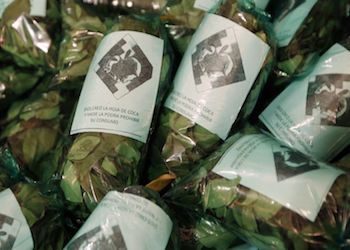Bolivia’s government has agreed to raise permitted levels of legal coca production after violent protests by farmers, in a move that exacerbates the flaw in the country’s otherwise largely successful coca policy: the gap between legal production and legal consumption.
On February 23, the Bolivian government and coca farmers came to an agreement for the country’s planned new coca law to allow 22,000 hectares of coca to be legally planted each year, reported La Razon.
The accord brought an end to weeks of violent protests by coca farmers against the law and its initial provision for 20,000 hectares of legal production. Under the terms of the current law, dating from 1986, only 12,000 hectares are allowed to supply Bolivia’s legal coca market.
The new law not only regulates the quantity of coca cultivations legally allowed in Bolivia, it also aims to create new mechanisms for the state to regulate production, distribution, sales, industrialization and exportation of Bolivian coca. Following the agreement with the coca farmers, the house of deputies approved the bill, which will now move to the senate, reported La Razon.
InSight Crime Analysis
Bolivia’s coca bill aims to enshrine in law the policies of former coca farmer and current president Evo Morales, who has favoured engagement with rather than repression of coca farmers.
The policy has largely served the Morales government well. While Bolivia’s neighbors Colombia and Peru have seen coca cultivation levels rise and fall amid the push and pull of forced eradication efforts, farmers and drug traffickers, Bolivia has seen a gradual but steady decrease since 2010, at least according to the United Nations Office on Drugs and Crime (UNODC) figures.
SEE ALSO: Evo’s Challenge: Bolivia the Drug Hub
However, the debate over legal limits to coca cultivation goes to the heart of the one major problem Morales’ policies have yet to address: coca production remains substantially higher than the amount of the crop required to satisfy the demand of Bolivia’s legal market. According to a 2013 government study, the legal coca market can be supplied with approximately 14,700 hectares of coca, meaning under the terms of the new law, more than 7,000 hectares worth of coca could find its way to the illegal cocaine market each year.
The coca law also aims to address this through government involvement in the regulation of the entire production chain, encouraging sales, industrialization and even international export. However, the government has long sought out new markets or new uses for coca and has yet to find a way to significantly bridge the legal coca supply-demand gap.

